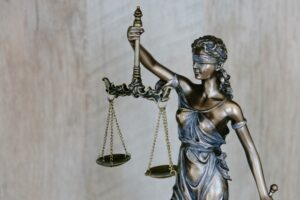Entry Into Force on May 1, 2025 of the EU “Design Package”: Modernizing the EU Designs Framework
The recent publication of Regulation (EU) 2024/2822 and Directive (EU) 2024/2823 marks a key milestone in the modernization of the European legal framework for designs. These reforms, with certain provisions taking effect from May 1, 2025, foresee a phased implementation to harmonize, simplify, and adapt the system to the digital age.
Harmonization and modernization
The term “Community design” has been updated to “European Union design” (EUD). This symbolic change modernizes the terminology while aligning it with that of European trademarks. To enhance identification, a visual symbol Ⓓ has been introduced, providing greater coherence within the system.
The reform expands definitions to incorporate technological advances. Animations, graphical interfaces, and digital twins are now included in the scope of protection, reflecting their essential role in modern industries. The concept of “product” has also been extended to non-physical forms, covering items used in video games or virtual environments such as the metaverse.
Filing procedures are now more flexible and better suited to creators’ needs. Applications can group up to 50 designs without classification constraints, and various digital formats are now accepted for design representations. Additionally, creators can defer publication for up to 30 months, offering strategic discretion to protect their designs while planning their market launch.
To promote accessibility, particularly for small and medium-sized enterprises (SMEs) and independent designers, some fees have been reduced or eliminated. Filing fees, for example, have been lowered, and the costs associated with the transfer of rights have been completely removed. However, a notable increase in renewal fees is expected. Previously, renewal fees for a 25-year period ranged from €90 to €180. Under the new framework, fees will start at €150 and rise to €700 by the fourth renewal cycle. This adjustment may disproportionately affect industries with longer product life cycles, such as automotive and industrial design, compared to industries like fashion, which are less impacted by the fee increase.
Enhanced protection of rights
The EU reform clarifies key aspects of design visibility. From now on, visibility is no longer a general requirement for protection, except for components of complex products. This revision eliminates past ambiguities and extends protection to a wider range of contemporary and diverse designs.
A major innovation is the introduction of the repair clause. This provision removes legal protection for spare parts necessary to restore the appearance of a complex product, limiting exclusive rights in this domain. The measure strikes a balance between design protection and competition in the spare parts market. However, it requires manufacturers to inform consumers about the origin of the products used for repairs, enhancing transparency and enabling informed choices.
In the realm of 3D printing, the reform introduces an exclusive right allowing rights holders to prohibit the creation, dissemination, and use of digital files capable of reproducing a protected design via 3D printing. Although this technology remains relatively uncommon in households, the provisions anticipate its potential growth, safeguarding creators’ rights in this emerging field.
Lastly, the reform extends rights holders’ protections to goods in transit within the European Union, even if their final destination is outside EU territory. This change strengthens the enforcement of intellectual property rights in a globalized context, addressing the challenges posed by counterfeit goods in international trade.
Alternative dispute resolution and legal certainty
The reform encourages EU Member States to establish administrative mechanisms for contesting the validity of national designs. Inspired by the EUIPO model for the European trademark (oppositions and cancelation actions), this approach offers a less expensive and faster alternative to traditional judicial procedures.
Additionally, the requirement for first disclosure within the EU has been abolished. Now, the initial disclosure of a design outside the EU can confer protection as an unregistered design. This change eliminates ambiguities from previous regulations, an important aspect in the post-Brexit context, where many designers chose the UK for their first presentations. This clarification further harmonizes the legal framework and reduces uncertainties for creators operating across multiple markets.
Key challenges to monitor
While the reform has integrated significant advances for the digital age, uncertainties remain regarding the protection of AI-generated designs. This rapidly growing area raises fundamental questions about the adequacy of current legal frameworks, making it essential to ensure effective protection tailored to these new forms of creation.
Additionally, the growing divergences between EU and UK regimes, exacerbated by Brexit, require close attention. Creators and businesses must exercise caution to harmonize their design protection strategies in these two now-distinct territories, minimizing legal and commercial risks associated with this fragmentation.
Timeline and future prospects
The new provisions will take effect in May 2025 for the regulation, while Member States have until December 2027 to transpose the directive into their national laws. This phased approach aims to ensure a harmonized application of the new rules across the European Union, offering creators an adjustment period.
The EU design reform represents a significant step forward in modernizing the legal framework and addressing 21st-century challenges. By clarifying key concepts, simplifying processes, and anticipating technological developments, the European Union offers a robust and inclusive system. For businesses and creators operating in Europe, adapting swiftly to these changes is essential to maximize the protection and competitiveness of their designs.
For assistance with managing and protecting your designs, our intellectual property experts are at your service. Dreyfus Law Firm with an international network of lawyers specializing in Intellectual Property.
Join us on social media!



 In a world where the lines between different artistic disciplines are becoming increasingly blurred, fashion designers often draw inspiration from art to bring their collections to life or to promote their brands.
In a world where the lines between different artistic disciplines are becoming increasingly blurred, fashion designers often draw inspiration from art to bring their collections to life or to promote their brands.










 When changing Facebook to Meta, Mark Zuckerberg tried to justify Meta as the future. The metaverse is indeed a reality for millions of online players, a place to meet, interact, and create in this new world.
When changing Facebook to Meta, Mark Zuckerberg tried to justify Meta as the future. The metaverse is indeed a reality for millions of online players, a place to meet, interact, and create in this new world.
 Over the past decade, the architecture, engineering, construction and Operations (AECO) industry has undergone several developments, particularly in the area of
Over the past decade, the architecture, engineering, construction and Operations (AECO) industry has undergone several developments, particularly in the area of 
 Aside from including related rights for press publishers and press agencies, and rebalancing relations between rights holders and content sharing platforms, the
Aside from including related rights for press publishers and press agencies, and rebalancing relations between rights holders and content sharing platforms, the